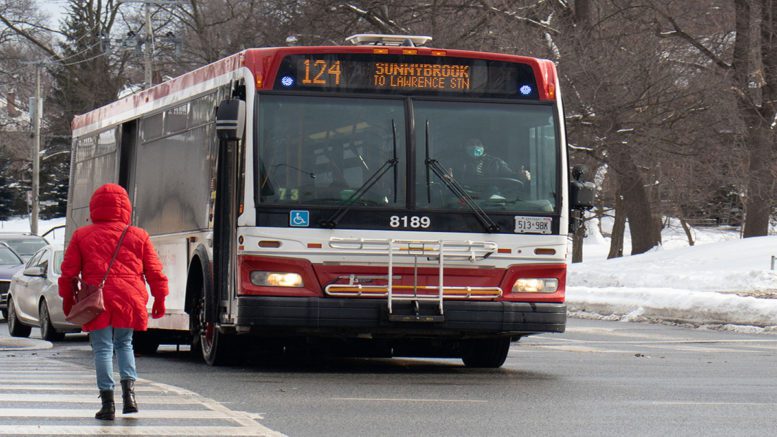For commuters the major snowstorm that hit Toronto on Jan. 17 slowed everything outside to a crawl, but for public transit it may have served a useful purpose: highlighting needed improvements.
TTC buses, streetcars and parts of the subway system, especially Line 1, suffered service cancellations and delays due to the storm.
“On days like that … we always anticipate there are going to be delays,” TTC spokesperson Stuart Green said. “On that particular day, every route saw delays. We had issues with the open-cut areas of our subway.”
For the subway, exposed parts of the track such as Rosedale Station can experience major issues in a storm like the one on Jan. 17.
“There’s stretches of outdoor track and those unfortunately lead to severe track and power rail issues when so much snow comes down and so quickly, and it’s not being cleared off,” said TTC chair, Jaye Robinson, councillor for Don Valley West.
The storm also affected the Scarborough RT, which is known to have issues with severe weather. The line is being permanently shut down in 2023 and replaced with a bus system until 2030, when a subway extension into Scarborough is to be completed.
More bus lanes needed
While weather was the main issue for the subway and the Scarborough RT, buses and, to a lesser degree, streetcars also have to contend with worsened traffic congestion during a large storm.
One solution that has been suggested, and that has been implemented on Eglinton East via RapidTO, are bus lanes, which are designated only for TTC and Wheel-Trans buses as well as bicycles.
More bus lanes are being planned, but at this point only eight and a half kilometres of bus lanes have been designated in Toronto, about 1/26th the distance of bus lanes in New York City.
“Other cities like Boston and New York have installed miles of bus lanes during the pandemic because they knew it would make trips faster and more reliable for essential workers, and we haven’t seen that in Toronto,” said Shelagh Pizey-Allen, executive director for TTCriders, a volunteer-led organization focusing on equity and improvements to public transit.
“What we really need, and what will transform our public transit systems, is that day-to-day operations funding.”
Shelagh Pizey-Allen, TTCriders
Many of the issues the TTC faced during the storm come down to political will and funding for the less glamorous parts of public transit, Pizey-Allen said.
“Getting to announce a big flashy project and cutting the ribbon on a new transit line is very exciting to politicians,” she said. “But what we really need, and what will transform our public transit systems, is that day-to-day operations funding.”
Pizey-Allen also called for improved communications between riders and the TTC about delays or other service issues, if a storm like this happens again.
Robinson also agreed communications during the storm could have been better.
“We really have much farther to go when it comes to customer communications,” she said. “I think we were trying to communicate to the residents and ridership about what was going on, but I think it could have been improved,” she said.

